 W
WThe Cassini–Huygens space-research mission, commonly called Cassini, involved a collaboration among NASA, the European Space Agency (ESA), and the Italian Space Agency (ASI) to send a space probe to study the planet Saturn and its system, including its rings and natural satellites. The Flagship-class robotic spacecraft comprised both NASA's Cassini space probe and ESA's Huygens lander, which landed on Saturn's largest moon, Titan. Cassini was the fourth space probe to visit Saturn and the first to enter its orbit. The two craft took their names from the astronomers Giovanni Cassini and Christiaan Huygens.
 W
WThe Defense Meteorological Satellite Program (DMSP) monitors meteorological, oceanographic, and solar-terrestrial physics for the United States Department of Defense. The program is managed by the United States Space Force with on-orbit operations provided by the National Oceanic and Atmospheric Administration (NOAA). The mission of the satellites was revealed in March 1973. They provide cloud cover imagery from polar orbits that are Sun-synchronous at nominal altitude of 830 km (520 mi).
 W
WThe Defense Satellite Communications System (DSCS) is a United States Space Force satellite constellation that provides the United States with military communications to support globally distributed military users. Beginning in 2007, DSCS is being replaced by the Wideband Global SATCOM system. A total of 14 DSCS-III satellites were launched between the early 1980s and 2003. Two satellites were launched aboard the Space Shuttle Atlantis in 1985 during the STS-51-J flight. As of 23 November 2015, seven DSCS-III satellites were still operational. DSCS operations are currently run by the 4th Space Operations Squadron out of Schriever Space Force Base.
 W
WGemini 1 was the first mission in NASA's Gemini program. An uncrewed test flight of the Gemini spacecraft, its main objectives were to test the structural integrity of the new spacecraft and modified Titan II launch vehicle. It was also the first test of the new tracking and communication systems for the Gemini program and provided training for the ground support crews for the first crewed missions.
 W
WGemini 2 was the second spaceflight of the American human spaceflight program Project Gemini, and was launched and recovered on January 19, 1965. Gemini 2, like Gemini 1, was an uncrewed mission intended as a test flight of the Gemini spacecraft. Unlike Gemini 1, which was placed into orbit, Gemini 2 made a suborbital flight, primarily intended to test the spacecraft's heat shield. It was launched on a Titan II GLV rocket. The spacecraft used for the Gemini 2 mission was later refurbished into the Gemini B configuration, and was subsequently launched on another suborbital flight, along with OPS 0855, as a test for the US Air Force Manned Orbital Laboratory. Gemini spacecraft no. 2 was the first craft to make more than one spaceflight since the X-15, and the only one until Space Shuttle Columbia flew its second mission in 1981.
 W
WGemini 3 was the first crewed mission in NASA's Gemini program. On March 23, 1965, astronauts Gus Grissom and John Young flew three low Earth orbits in their spacecraft, which they nicknamed Molly Brown. This was the ninth crewed US spaceflight, and the 17th world human spaceflight including eight Soviet flights. It was also the final crewed flight controlled from Cape Kennedy Air Force Station in Florida, before mission control functions were shifted to a new control center located at the newly opened Manned Spacecraft Center in Houston, Texas.
 W
WGemini 4 was the second crewed spaceflight in NASA's Project Gemini, occurring in June 1965. It was the tenth crewed American spaceflight. Astronauts James McDivitt and Ed White circled the Earth 66 times in four days, making it the first US flight to approach the five-day flight of the Soviet Vostok 5. The highlight of the mission was the first space walk by an American, during which White floated free outside the spacecraft, tethered to it, for approximately 20 minutes.
 W
WGemini 5 was a 1965 crewed spaceflight in NASA's Project Gemini. It was the third crewed Gemini flight, the eleventh crewed American spaceflight, and the nineteenth human spaceflight of all time. It was also the first time an American crewed space mission held the world record for duration, set on August 26, 1965, by breaking the Soviet Union's previous record set by Vostok 5 in 1963. This record might have been one day longer; however, Gemini V was cut short, due to the approach of Hurricane Betsy.
 W
WGemini 6A was a 1965 crewed United States spaceflight in NASA's Gemini program. The mission achieved the first crewed rendezvous with another spacecraft, its sister Gemini 7. Although the Soviet Union had twice previously launched simultaneous pairs of Vostok spacecraft, these established radio contact with each other, but they had no ability to adjust their orbits in order to rendezvous and came no closer than several kilometers of each other, while the Gemini 6 and 7 spacecraft came as close as one foot (30 cm) and could have docked had they been so equipped.
 W
WGemini 7 was a 1965 crewed spaceflight in NASA's Gemini program. It was the fourth crewed Gemini flight, the twelfth crewed American spaceflight, and the twenty-first crewed spaceflight including Soviet flights and X-15 flights above the Kármán line. The crew of Frank Borman and Jim Lovell spent nearly 14 days in space, making a total of 206 orbits. Their spacecraft was the passive target for the first crewed space rendezvous performed by the crew of Gemini 6A.
 W
WGemini 8 was the sixth crewed spaceflight in NASA's Gemini program. It was launched on March 16, 1966, and was the 12th crewed American flight and the 22nd crewed spaceflight of all time. The mission conducted the first docking of two spacecraft in orbit, but suffered the first critical in-space system failure of a U.S. spacecraft which threatened the lives of the astronauts and required an immediate abort of the mission. The crew was returned to Earth safely.
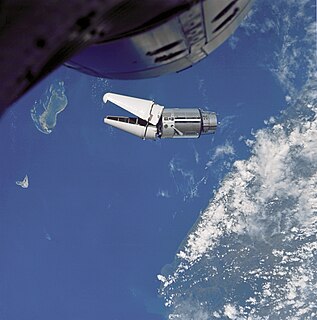 W
WGemini 9A was a 1966 crewed spaceflight in NASA's Gemini program. It was the seventh crewed Gemini flight, the 13th crewed American flight and the 23rd spaceflight of all time. The original crew for Gemini 9, command pilot Elliot See and pilot Charles Bassett, were killed in a crash on February 28, 1966 while flying a T-38 jet trainer to the McDonnell Aircraft plant in St. Louis, Missouri to inspect their spacecraft. Their deaths promoted the backup crew, Thomas P. Stafford and Eugene Cernan, to the prime crew. The mission was renamed Gemini 9A after the original May 17 launch was scrubbed when the mission's Agena Target Vehicle was destroyed after a launch failure. The mission was flown June 3–6, 1966, after launch of the backup Augmented Target Docking Adaptor (ATDA). Stafford and Cernan rendezvoused with the ATDA, but were unable to dock with it because the nose fairing failed to eject from the docking target due to a launch preparation error. Cernan performed a two-hour extravehicular activity, during which it was planned for him to demonstrate free flight in a self-contained rocket pack, the USAF Astronaut Maneuvering Unit. He was unable to accomplish this due to stress, fatigue, and overheating.
 W
WGemini 10 was a 1966 crewed spaceflight in NASA's Gemini program. It was the 8th crewed Gemini flight, the 16th crewed American flight, and the 24th spaceflight of all time.
 W
WGemini 11 was the ninth crewed spaceflight mission of NASA's Project Gemini, which flew from September 12 to 15, 1966. It was the 17th crewed American flight and the 25th spaceflight to that time. Astronauts Charles "Pete" Conrad Jr. and Richard F. Gordon Jr. performed the first-ever direct-ascent rendezvous with an Agena Target Vehicle, docking with it 1 hour 34 minutes after launch; used the Agena rocket engine to achieve a world-record high-apogee Earth orbit; and created a small amount of artificial gravity by spinning the two spacecraft connected by a tether. Gordon also performed two extra-vehicular activities for a total of 2 hours 41 minutes.
 W
WGemini 12 was a 1966 crewed spaceflight in NASA's Project Gemini. It was the 10th and final crewed Gemini flight, the 18th crewed American spaceflight, and the 26th spaceflight of all time, including X-15 flights over 100 kilometers (54 nmi). Commanded by Gemini VII veteran James A. Lovell, the flight featured three periods of extravehicular activity (EVA) by rookie Edwin "Buzz" Aldrin, lasting a total of 5 hours and 30 minutes. It also achieved the fifth rendezvous and fourth docking with an Agena target vehicle.
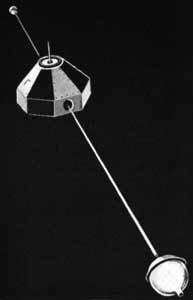 W
WThe Gravity Gradient Test Satellite was launched by the US Air Force from Cape Canaveral LC41 aboard a Titan IIIC rocket on June 16, 1966 at 14:00:01 UTC. The satellite was launched along with seven IDCSP satellites, with which it shared a bus. In contrast to the solar-powered IDCSP satellites, GGTS was battery powered.
 W
WHelios-A and Helios-B are a pair of probes that were launched into heliocentric orbit to study solar processes. As a joint venture of West Germany's space agency DLR and NASA the probes were launched from Cape Canaveral Air Force Station, Florida, on December 10, 1974, and January 15, 1976, respectively. As built by the main contractor, Messerschmitt-Bölkow-Blohm, they were the first space probes built outside the United States and the Soviet Union to leave Earth's orbit.
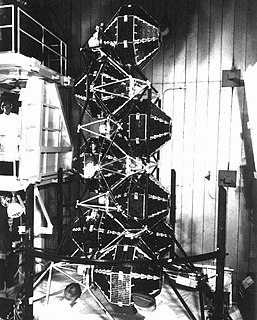 W
WThe Initial Defense Communications Satellite Program or IDCSP was the first United States Department of Defense communications satellite constellation and the first stage of the Defense Communications Satellite Program (DCSP). Launched in five groups by Titan IIIC launch vehicles to near equatorial, subsynchronous orbits between 1966 and 1968, they were intended to be experimental testbeds. They were so successful that, by the time of the launch of the last set of eight satellites, the IDCSP was deemed operational and renamed Initial Defense Satellite Communications System or IDSCS. This system allowed real-time collection of battlefield intelligence during the Vietnam War. A total of 35 IDCSP satellites were launched, 27 successfully.
 W
WIntelsat 603 or IS-603, previously named Intelsat VI F-3, is a communications satellite operated by Intelsat. Launched in 1990, it was the second of five Intelsat VI satellites to be launched. The Intelsat VI series was constructed by Hughes Aircraft, based on the HS-389 satellite bus.
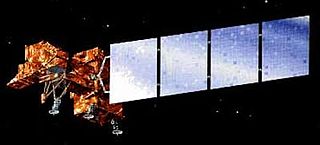 W
WLandsat 6, equipped with upgraded versions of the instruments on Landsat 5, was designed to carry forward the Landsat program. It was launched on October 5, 1993 with a Titan II launch vehicle, but failed to reach orbit. Landsat 6 omitted the Multi-Spectral Scanner found on its predecessors, but carried an Enhanced Thematic Mapper, which improved on the previous Thematic Mapper by adding a 15m-resolution panchromatic band.
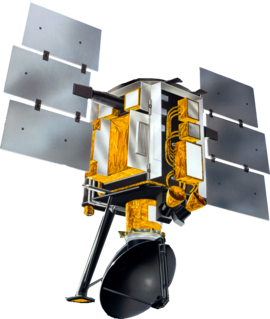 W
WThe NASA QuikSCAT was an Earth observation satellite carrying the SeaWinds scatterometer. Its primary mission was to measure the surface wind speed and direction over the ice-free global oceans. Observations from QuikSCAT had a wide array of applications, and contributed to climatological studies, weather forecasting, meteorology, oceanographic research, marine safety, commercial fishing, tracking large icebergs, and studies of land and sea ice, among others. This SeaWinds scatterometer is referred to as the QuikSCAT scatterometer to distinguish it from the nearly identical SeaWinds scatterometer flown on the ADEOS-2 satellite.
 W
WViking 1 was the first of two spacecraft sent to Mars as part of NASA's Viking program, landing on 20 July 1976. It was the first successful Mars lander in history. Viking 1 was operational on Mars for 2245 sols. Viking 1 held the record for the longest Mars surface mission of 2307 days or 2245 Martian solar days, until that record was broken by the Opportunity rover on 19 May 2010.
 W
WThe Viking 2 mission was part of the American Viking program to Mars, and consisted of an orbiter and a lander essentially identical to that of the Viking 1 mission. Viking 2 was operational on Mars for 1281 sols. The Viking 2 lander operated on the surface for 1316 days, or 1281 sols, and was turned off on April 12, 1980, when its batteries failed. The orbiter worked until July 25, 1978, returning almost 16,000 images in 706 orbits around Mars.
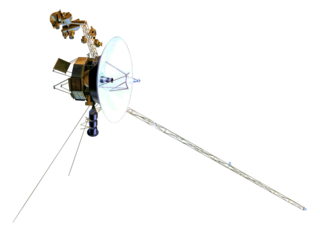 W
WVoyager 1 is a space probe launched by NASA on September 5, 1977, as part of the Voyager program to study the outer Solar System and interstellar space beyond the Sun's heliosphere. Launched 16 days after its twin, Voyager 2, Voyager 1 has operated for 43 years, 11 months and 14 days as of August 20, 2021 UTC [refresh] and still communicates with the Deep Space Network to receive routine commands and to transmit data to Earth. Real-time distance and velocity data is provided by NASA and JPL. At a distance of 153.2 AU from Earth as of August 5, 2021, it is the most distant man-made object from Earth.
 W
WVoyager 2 is a space probe launched by NASA on August 20, 1977, to study the outer planets and interstellar space beyond the Sun's heliosphere. A part of the Voyager program, it was launched 16 days before its twin, Voyager 1, on a trajectory that took longer to reach Jupiter and Saturn but enabled further encounters with Uranus and Neptune. It is the only spacecraft to have visited either of these two ice giant planets. Voyager 2 was the fourth of five spacecraft to achieve the Solar escape velocity, which allowed it to leave the Solar System.